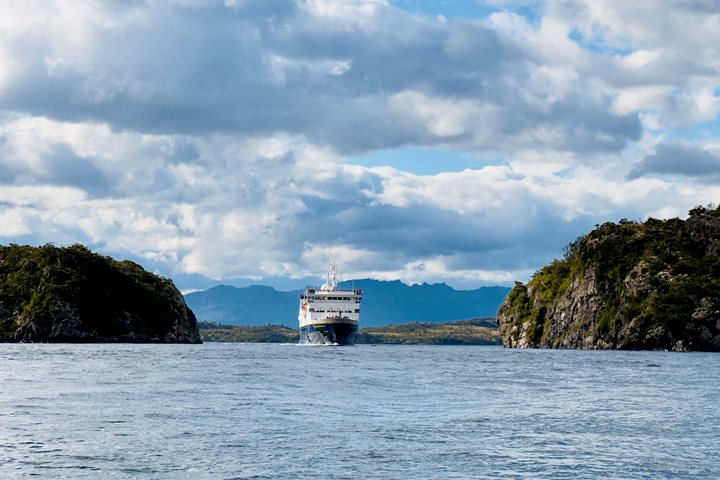We woke up early to see the sunrise in the Antarctic Sound. National Geographic Explorer cruised past huge tabular icebergs that were grounded on the seafloor in the narrow channel at the tip of the Antarctic Peninsula. The golden hour morning sunlight reflected off the icebergs and ice-covered mountains, giving the scene a beautiful radiance. What a magnificent entrance to the Weddell Sea, where we will spend the entire day.
During the morning, we visited Devil’s Island in the Weddell Sea. This volcanic island jutted up out of the sea like two horns. We took turns going hiking and kayaking. The hikers enjoyed close-up views of the 30,000 adelie penguins, which are the smallest and most polar of the penguin species. We enjoyed watching them walk around and steal rocks for their pebble nests. Then, we climbed up the 600-foot peak to get amazing views of the surrounding islands. We learned that the nearby flat-topped volcanoes were erupted under a thick ice cap. On top of the mountain, several snow petrels flew around the cliffs as we admired the view down to the ship. Meanwhile, the kayakers paddled among the blue and white icebergs, with great views of swimming Adelie penguins and Devil’s Island.
When we got back to the ship, we had a polar plunge. Dozens of guests and staff members braved the cold sea water and jumped into the sea among the small brash ice. We all had a blast, regardless of whether we were jumping or watching this crazy spectacle.
During the afternoon, the ship cruised into some sea ice near Snow Hill Island. We encountered four killer whales (orcas), so we stopped the ship to admire them for an hour or so. Later on, sharp spotters in the bridge found several emperor penguins. After seeing some in the water, we cruised close enough to them to photograph these magnificent penguins, which are the largest and best-known penguin species. First, we saw a single adult on one ice floe, and then spotted two others in another ice area. While watching the penguins, we spotted several Weddell seals lying on the ice.
During and after dinner, the ship cruised north past more tabular icebergs, which are the largest moving objects on earth. Measuring up to miles in length, these giant icebergs came from the Larson Ice Shelf, collapsing during the last few decades. We had to keep reminding ourselves that 90% of these 100-foot high icebergs were under water, so they were much bigger than they first appeared. What a perfect way to end such a beautiful and busy day.









